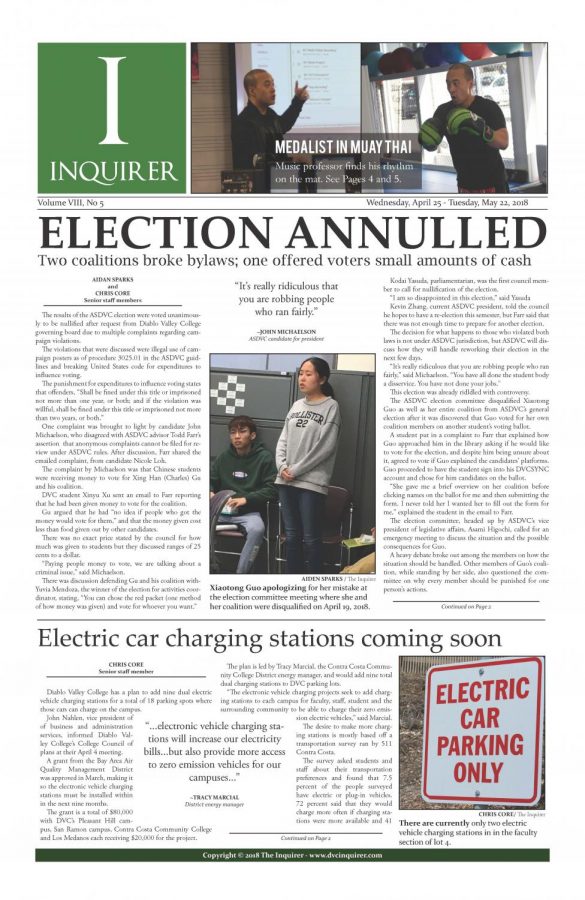Republicans have been quick to see Donald Trump’s victory in the presidential election as a mandate from the American people to invoke an extreme right agenda. But the election is sending a different message to the Democratic Party — not just to regroup, but to assess its identity.
This isn’t just a loss. It’s a party wake-up call.
Internal polling for President Joe Biden’s reelection campaign warned earlier this year of a potential landslide loss of more than 400 Electoral College votes. Biden is the most unpopular U.S. president in seven decades, averaging an approval rating of 38.7 percent.
After he withdrew from the race in July and endorsed Vice President Kamala Harris for the Democratic nomination, party enthusiasm soared. What should have been a landslide for Trump turned into a tight race.
Democrats managed to secure many victories in important down-ballot races, but Harris’s failure to win the White House came down to her inability to distance herself from President Biden’s record.
Harris’s loss showed more than anything that voters had rejected the Biden administration’s status quo. Yet even as the entire country shifted right from the 2020 election results, Trump won by mostly small margins, particularly in the swing states. While he captured the popular vote along with the Electoral College, he still failed to secure more than 50 percent of the popular vote.
Harris underperformed in swing states like Arizona, Michigan, Nevada and Wisconsin — all states that will nonetheless be sending newly elected or reelected Democrats to the Senate, showing voters’ willingness to vote for Democrats, just not at the federal level. Arizona Democrat Ruben Gallego beat Republican Kari Lake by 2.4 points, even as Trump won the state by 5.5 points. Likewise, in Michigan, Democrat Elissa Slotkin barely won by 0.3 points although Trump carried the state by 1.4 points — an even larger margin of victory than his 2016 win.
Nevada reelected incumbent Senator Jacky Rosen by 1.7 points, yet Trump was able to win the state for the first time in his three presidential runs. And Wisconsin reelected Democratic Senator Tammy Baldwin by 0.9 points, as Trump carried this closest swing state by just 0.86 points. Simply put, if Harris had matched her performance with Democrats in these state races, along with North Carolina, she would have won the election.
It’s also important to note that Arizona, Colorado, Maryland, Missouri, Montana, Nevada and New York all passed ballot measures to protect the right to abortion in their states. Harris campaigned as a champion for women’s reproductive rights, and red states like Missouri and Montana agreed with the policies and passed their protections for abortion while also voting for Trump by more than 20 points.
Harris’s focus on campaigning to defend women’s rights and protect democracy from the controversial “Project 2025” did little to address voters’ concerns about the economy.
The results sent a clear message: voters approved of Harris’s platform but had a hard time seeing how she would act differently from her current, unpopular boss. Harris largely campaigned on the same reforms Biden ran with four years ago, but when it came down to it, the vice president didn’t convince enough voters that she would be able to deliver.
Democrats have spent recent weeks pointing fingers and asking hypotheticals about who might have been a better VP pick, whether campaigning with Republican centrists like Liz Cheney was the right thing to do, and of course, heaping blame on Biden for not stepping out of the race earlier. But in reality, the country voted for Trump over Harris not because the majority wants to ban abortion or get rid of welfare programs—or because Harris is a woman. They simply believed Trump was a better bet to deal with their top twin concerns: the economy and immigration.
Harris’s late entrance into the race put her at a disadvantage, but she still managed to raise over $1 billion, host massive rallies, outperform Trump in the debate, and most importantly, bring energy to the Democrats in a way they were missing under Biden. As Democrats begin strategizing for the 2026 midterms, and eventually for the general election in 2028, Harris still polls as the frontrunner for the nominee. Regardless of whether she runs again, she will be remembered for her achievements as the first woman of African American and Asian descent to hold the office of vice president.
The Democratic Party needs to take this central lesson: a candidate more than qualified for the presidency lost. Democrats need to embrace bold and innovative leadership that speaks to all Americans. The party needs to build a platform that addresses rising costs of living, immigration, and a fairer economy that resonates not just with the party’s base but also with independents and voters who feel left behind.
Only then will they have a chance of winning in future elections.






































































Donna Smith • Dec 2, 2024 at 6:08 pm
Diego:
Thank you for this well-researched and written opinion piece. It shows the quality of writing we have come to expect from our Inquirer staff.
Good job to all of you!
We’ll be looking for more in 2025!
Donna Smith
Instructor, Journalism